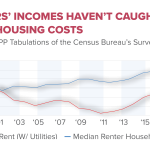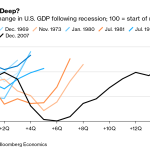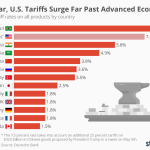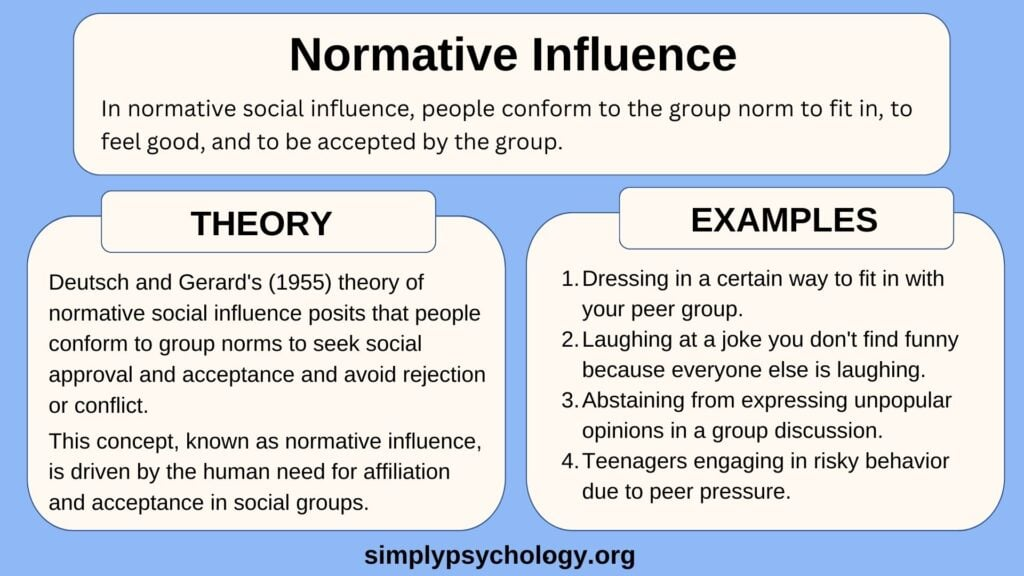The influence of social norms on preferences plays a critical role in shaping our choices, often in more profound ways than we realize. Behavioral science reveals that our tastes and inclinations are not solely products of personal experience; they are heavily impacted by the societal contexts in which we exist. From music to consumer choices, these social standards guide individuals, creating a complex tapestry of brand loyalty and preferences that feel uniquely personal yet are influenced by the collective. Understanding how these norms dictate our reactions can unveil the underlying reasons why we gravitate towards certain products or brands. As we navigate daily life, we may unwittingly conform to the prevailing preferences around us, leading us to believe our choices are entirely our own.
Examining the impact of societal expectations on individual choices reveals that our likes and dislikes are often intertwined with the prevailing trends in our environment. This phenomenon, sometimes referred to as peer influence or cultural conditioning, highlights the extent to which our personal tastes mirror those around us. In essence, what we perceive as personal preferences are frequently shaped by shared behaviors and collective attitudes within our communities. Such dynamics illustrate how brand loyalty can form not just from marketing techniques, but from the desire to align ourselves with social groups. By exploring these alternative expressions of choices, we can glean insights into the psychological mechanisms driving our consumption patterns.
Understanding Personal Preferences
Personal preferences are shaped by a multitude of factors, including individual experiences, environmental influences, and social contexts. Behavioral science emphasizes that our tastes are often not as unique as we would like to believe. For instance, preferences in music tend to crystallize during formative years, particularly between the ages of 16 and 20. This phase is vital for identity formation, which explains why people often hold nostalgic beliefs about the music from their adolescence. In other domains, such as food or brand loyalty, factors like family habits significantly influence our choices; parents often dictate early preferences that persist into adulthood.
Moreover, the dynamic nature of personal preferences indicates they can evolve over time. For example, the brands we choose in adulthood, such as our preferred car or spaghetti sauce, are generally those we associate with comfort or familiarity. As we navigate through different life stages and circumstances, our choices may adapt based on need, availability, and exposure. This indicates a complex interplay between personal agency and external influences that shape not just what we prefer, but also how we come to like these items.
The Role of Social Norms in Shaping Preferences
Social norms play a crucial role in influencing individual preferences, often steering consumer behavior without our conscious awareness. Behavioral scientist Michael I. Norton highlights how societal standards and peer choices subtly dictate our inclinations. When we witness friends or influencers endorsing certain brands or products through social media, we subconsciously align our preferences with those norms. This impact is notably pronounced in industries like fashion and dining, where social validation often drives choices instead of intrinsic liking. Consequently, our perceived preferences might be mere reflections of socially established trends rather than authentic tastes.
Moreover, the alignment of personal preferences with social norms can also foster brand loyalty. As individuals, we often seek to belong to specific groups, and this desire can lead us to prioritize brands that resonate with the social circles we wish to identify with. For instance, the resurgence of minimalist fashion trends like ‘normcore’ reflects societal movements towards valuing authenticity and simplicity. Even so, such choices remain influenced by visible cues from peers, showcasing how deeply embedded social norms are within our decision-making processes—essentially driving us to conform while we think we are expressing individual taste.
Behavioral Science Insights on Consumer Choices
Behavioral science provides intriguing insights into how and why we make consumer choices. For instance, the notion that our choices influence our attitudes post facto challenges the traditional perspective that consumer preferences stem purely from personal attitudes. As mentioned, many city dwellers base their opinions on local pizza shops not purely on quality, but rather on accessibility and social influences from their immediate environments. This illustrates the randomness in our selections—a phenomenon that brings forth the idea that our decisions are often shaped by external cues, rather than intrinsic evaluative considerations.
Furthermore, understanding these behavioral patterns can significantly influence marketing strategies. Companies leverage data analysis to tailor their advertising strategies according to identified consumer behaviors, making it easier to tap into our preferences. The sophistication of AI in marketing means that brands can identify which products individuals are likely to prefer, thereby fostering a cycle where advertising reinforces existing preferences rather than challenging them. Consequently, the intersection of behavioral science and marketing enables companies to create more personalized consumer experiences, which can further lock in brand loyalty.
The Connection Between Identity and Preferences
Our identities are deeply intertwined with our preferences, drawing connections across various aspects of life, including music, food, and brand choices. The brands we gravitate toward often serve as extensions of our identities, reflecting our values, social group affiliations, and personal experiences. For instance, someone who identifies with eco-friendly values may prefer brands that emphasize sustainability. This illustrates how personal preferences can act as subtle markers of identity, showcasing not only what we like but also who we aspire to be.
Additionally, choices related to personal preferences reveal underlying social dynamics within communities. As individuals select brands or trends that resonate with their social identity, they reinforce a collective standard that can lead to the formation of subcultures. This process can be observed in diverse areas, from music genres to fashion, where groups create and adhere to specific preferences that differentiate them from others. The deeper one delves into these preferences, the more complex the narrative becomes, highlighting how identity and choices coexist in an ongoing dialogue shaped by societal contexts.
Influence of Parents on Brand Loyalty
The preferences we develop often stem from familial influences, notably those imparted by our parents during formative years. Behaviors modeled by parents become ingrained patterns, especially when it comes to consumer choices. For example, the brand of spaghetti sauce used in a household can predict which brand we choose as adults, showcasing a direct line from parental influence to personal preference. Even when individuals wish to break away from family habits, the psychological attachment often makes it challenging to switch preferences later in life.
Moreover, brand loyalty forged through familial choices can be reinforced by social norms, as adolescents often desire to align with their family’s established preferences while also navigating peer pressure. This dual influence renders consumer choices quite complex; while individuals may feel that their preferences are autonomous, they can be significantly shaped by inherent family dynamics and the desire to conform socially. In essence, the brands we choose often tell a story of our past relationships as much as they reflect our current desires.
Social Media’s Impact on Preferences
The advent of social media has dramatically reshaped how we perceive and form our preferences. Instead of relying solely on personal experiences or traditional advertising, individuals now curate their tastes through platforms like Instagram or Facebook, where they’re exposed to influencers and peer choices. This heightened visibility cultivates a perception that these social media reflections are authentic representations of one’s identity, thereby driving preference formation. In this sense, social media not only showcases products but also serves to mold preferences and consumer behaviors.
Furthermore, the competitive nature of social media means that brands must engage more authentically with consumers. The insights derived from analytics allow companies to tailor their messaging to resonate with specific audiences, ensuring their brands align with popular preferences depicted online. This continuous engagement cycle can foster intense brand loyalty, where consumers feel an emotional connection to brands that align with their curated social identities. Thus, social media acts as both a magnifier of preferences and an influencer of future choices.
Trends and Subcultures in Consumer Preferences
Understanding consumer preferences within the context of emerging trends and subcultures reveals much about individual choices today. The rise of niche markets reflects how preferences can evolve into distinct subgroups, where individuals share and reinforce similar preferences. For example, trends like ‘normcore’ reflect a cultural shift towards valuing identity through unconventional choices in fashion—selecting everyday items but presenting them in a unique way. This trend signifies how group preferences can create new identities that challenge mainstream norms.
Additionally, these subcultures illustrate the fluidity of preferences, which can be both limiting and liberating. On one hand, consumers find belonging within these groups, but on the other, it may confine them to certain brand choices or styles. Even as preferences become segmented within subcultures, individuals make personal selections from available brands, often reflecting a balance between societal expectations and personal identity. As such, the exploration of consumer preferences through the lens of emerging trends highlights the intertwined nature of individual choice and collective identity.
Switching Costs: Analyzing Preference Changes
Switching costs play a pivotal role in how preferences shift or stay fixed over time. When individuals encounter difficult transitions from one brand to another, such as shifting from a PC to a Mac, they often experience significant friction due to the need to adapt to new systems and functionalities. This resistance can stem from familiarity—the comfort of established brands creates a psychological barrier that can hinder consumers from exploring alternatives.
Conversely, when the costs associated with switching brands are low, as seen in clothing styles or fast food restaurants, consumers are more willing to experiment. The ease of switching encourages exploration, which can lead to diverse preferences in products. An example might be consumers readily trying new pizza styles or specific food brands because the act of switching poses little risk or inconvenience. Therefore, comprehending how switching costs function can illuminate broader patterns in consumer behavior and brand loyalty.
The Interplay of Preferences and Marketing Strategies
The dynamic relationship between consumer preferences and marketing strategies cannot be overstated. As brands leverage data analytics to understand their target markets, they can create highly personalized experiences that resonate with individual preferences. At the same time, understanding these preferences informs future marketing campaigns, where brands cater messages that align with the values and identities of their consumers. This creates a feedback loop where preferences evolve in response to targeted marketing efforts and broader societal trends.
Moreover, effective marketing heavily relies on tapping into social influences and trends, demonstrating how closely intertwined consumer psychology and marketing strategies are. For instance, brands that engage with consumers on social media possess a better understanding of shifting preferences and can pivot quickly to maintain relevancy. By analyzing social norms and the behaviors within specific demographics, marketers can craft campaigns that resonate deeply, ensuring brand loyalty is cultivated effectively amidst changing landscapes.
Frequently Asked Questions
How do social norms influence personal preferences in consumer choices?
Social norms significantly shape personal preferences by creating shared values and expectations within a community. When individuals seek acceptance, they often choose brands or products that are popular within their social circles, reinforcing those norms. This behavioral science perspective suggests that consumer choices are not solely influenced by individual desires, but also by the pressure to conform to group preferences.
What role do social norms play in brand loyalty?
Brand loyalty is often a reflection of social norms, as individuals are more likely to remain loyal to familiar brands that are endorsed by their peers. This dynamic creates a cycle where social acceptance leads to repeated choices of certain brands, thereby solidifying preferences that align with group standards and expectations.
How can marketers leverage the influence of social norms on preferences?
Marketers can capitalize on the influence of social norms by utilizing data analytics to identify trends within specific social groups. By tailoring advertisements that resonate with these norms, brands can enhance their appeal and increase the likelihood of influencing consumer choices. Understanding community behaviors allows for more effective marketing strategies that align with prevailing preferences.
In what ways do social norms affect our attitudes towards personal preferences?
Social norms can shape our attitudes towards personal preferences by creating a sense of what is socially acceptable or desirable. This influence often leads consumers to rationalize choices based on perceived social validation rather than inherent liking. Consequently, individuals may develop preferences that align with social expectations rather than their unique taste.
Can understanding social norms improve our decision-making in personal preferences?
Yes, understanding social norms can greatly enhance decision-making regarding personal preferences. By recognizing the subtle influence of societal behaviors and values, individuals can make more informed choices that reflect their true likes and dislikes, rather than merely conforming to what is popular or expected within their social groups.
How do social norms and personal preferences interact in different cultural contexts?
The interaction between social norms and personal preferences varies across cultural contexts, as different societies prioritize different values. For instance, collectivist cultures may emphasize group acceptance, influencing individuals to adopt similar preferences. Conversely, individualistic societies may encourage uniqueness, allowing for a wider array of personal preferences to emerge, often in reaction to prevailing social norms.
What is the impact of social norms on developing personal brand preferences?
Social norms heavily influence the development of personal brand preferences, as individuals often emulate the brands that are widely accepted or trendy within their social circles. This emulation is driven by the desire for belonging, leading to significant brand loyalties based on what is culturally deemed favorable rather than purely individual choice.
How can awareness of social norms help individuals identify their true preferences?
Being aware of social norms allows individuals to discern between socially influenced preferences and their authentic likes. This self-awareness can help in critically evaluating brand loyalties and consumer choices, empowering individuals to seek products and brands that genuinely resonate with their personal tastes, circumventing the pressures of social conformity.
What methods can help track the influence of social norms on consumer preferences over time?
To track the influence of social norms on consumer preferences, researchers can utilize methods such as longitudinal studies, surveys, and data analysis of purchasing behaviors across different demographics. Monitoring changes in brand loyalty and consumer choices in response to shifting social norms can provide valuable insights into how preferences evolve in various contexts.
| Key Point | Details |
|---|---|
| Influence of Parents | Parents’ preferences heavily shape our own, such as in brand choices for everyday products. |
| Identity Formation | Music preferences are often formed in teenage years, leading to a perception that this music represents the best. |
| Choice vs. Attitude | Our product choices create our attitudes post facto, sometimes independent of initial preferences. |
| Social Media Influence | Advertisements on social platforms often shape our self-image and preferences. |
| Market Dynamics | Data-driven marketing tailors brands to individuals’ unseen preferences. |
| Switching Costs | Changing preferences varies in difficulty, impacting consumer loyalty. |
Summary
The influence of social norms on preferences is a powerful concept that illustrates how our likes and dislikes are often shaped by external factors rather than solely individual choice. From parental guidance to social media interactions, our preferences are intricately intertwined with the behaviors and expectations of those around us. Understanding this influence helps us navigate our personal choices more consciously, revealing that many of our favorite brands and tastes may result from a blend of societal input and personal experience.








